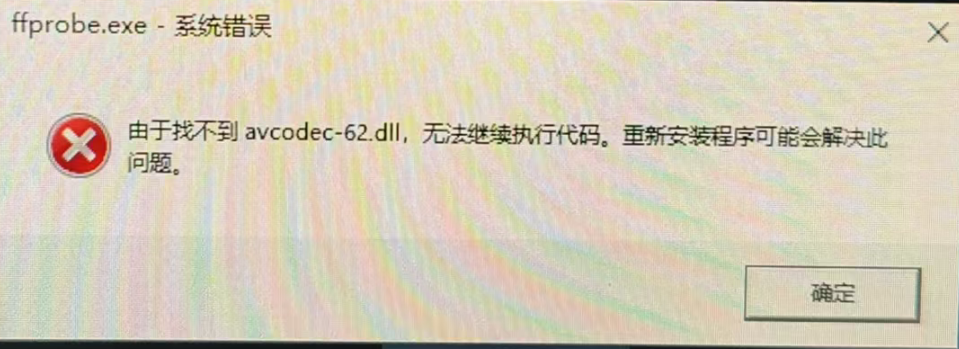The easiest way to install FFmpeg on Windows is to download the official executable.
Official FFmpeg download page: https://www.gyan.dev/ffmpeg/builds
There are multiple versions available on the download page, as shown in the image below. What are the differences between them, and which one should you download?
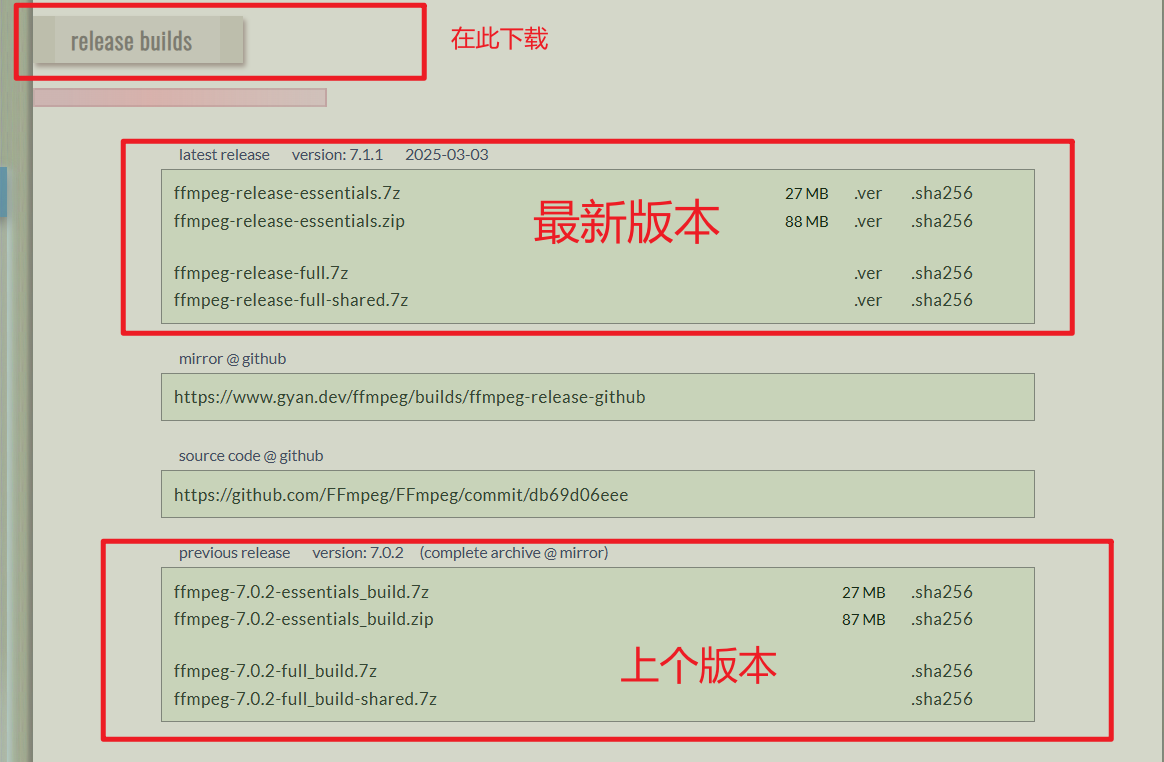
Detailed Explanation of Each Version
1. ffmpeg-release-essentials (Essentials Version)
- Includes:
ffmpeg.exe(main program for audio/video conversion and processing)ffprobe.exe(for viewing detailed media file information)ffplay.exe(a simple player for quick previews)- A set of core, commonly used libraries (encoders, decoders, filters, etc.), such as H.264, H.265 (HEVC), AAC, MP3, VP9, etc.
- Features:
- Smallest file size.
- Sufficient for most everyday tasks, like format conversion, video editing, merging, and audio extraction.
- Who it's for:
- Most general users and beginners. If you're unsure which version to choose, this one is a safe bet.
2. ffmpeg-release-full (Full Version)
- Includes:
- Everything in the
essentialsversion. - Additionally includes many non-essential but powerful third-party libraries and filters, such as:
- More professional encoders (e.g.,
svt-av1for AV1). - Advanced filters (e.g.,
libvmaffor video quality assessment). - Support for more uncommon formats and protocols.
- More professional encoders (e.g.,
- Everything in the
- Features:
- Most comprehensive feature set, supporting almost everything FFmpeg can do.
- Larger file size than the
essentialsversion. - This is a "static" build, meaning all dependent libraries are compiled into the
ffmpeg.exeand other executable files. This makes the program very portable (only the.exefiles are needed), but the.exefiles themselves are larger.
- Who it's for:
- Everyone, or if you encounter "Unknown encoder/decoder/filter..." errors with the
essentialsversion, indicating a missing feature, then you should download the full version.
- Everyone, or if you encounter "Unknown encoder/decoder/filter..." errors with the
3. ffmpeg-release-full-shared (Full Shared Version)
Non-developers should avoid this version, as you may encounter "missing xxx.dll" errors.
- Includes:
- Functionally identical to the
fullversion, containing all libraries. - Structural difference: This is a "shared" build. Libraries are not compiled into the
.exefiles but are provided as separate.dllfiles (dynamic link libraries) in thebinfolder.
- Functionally identical to the
- Features:
- The
ffmpeg.exefile itself is small. - The program depends on the
.dllfiles in the same directory; you cannot move the.exefile alone. - The total extracted folder size is the largest.
- The
- Who it's for:
- Software developers. If you want to call FFmpeg functions from your own programs (e.g., in C++, Python, C#), you need to link against these
.dllfiles. Regular command-line users rarely need this version.
- Software developers. If you want to call FFmpeg functions from your own programs (e.g., in C++, Python, C#), you need to link against these
Adding FFmpeg to System Environment Variables
To add to the Path environment variable: Press Win + Pause (key in the top-right corner), then in the window that opens, click: Advanced system settings → Environment Variables → Under System Variables, find and double-click Path.
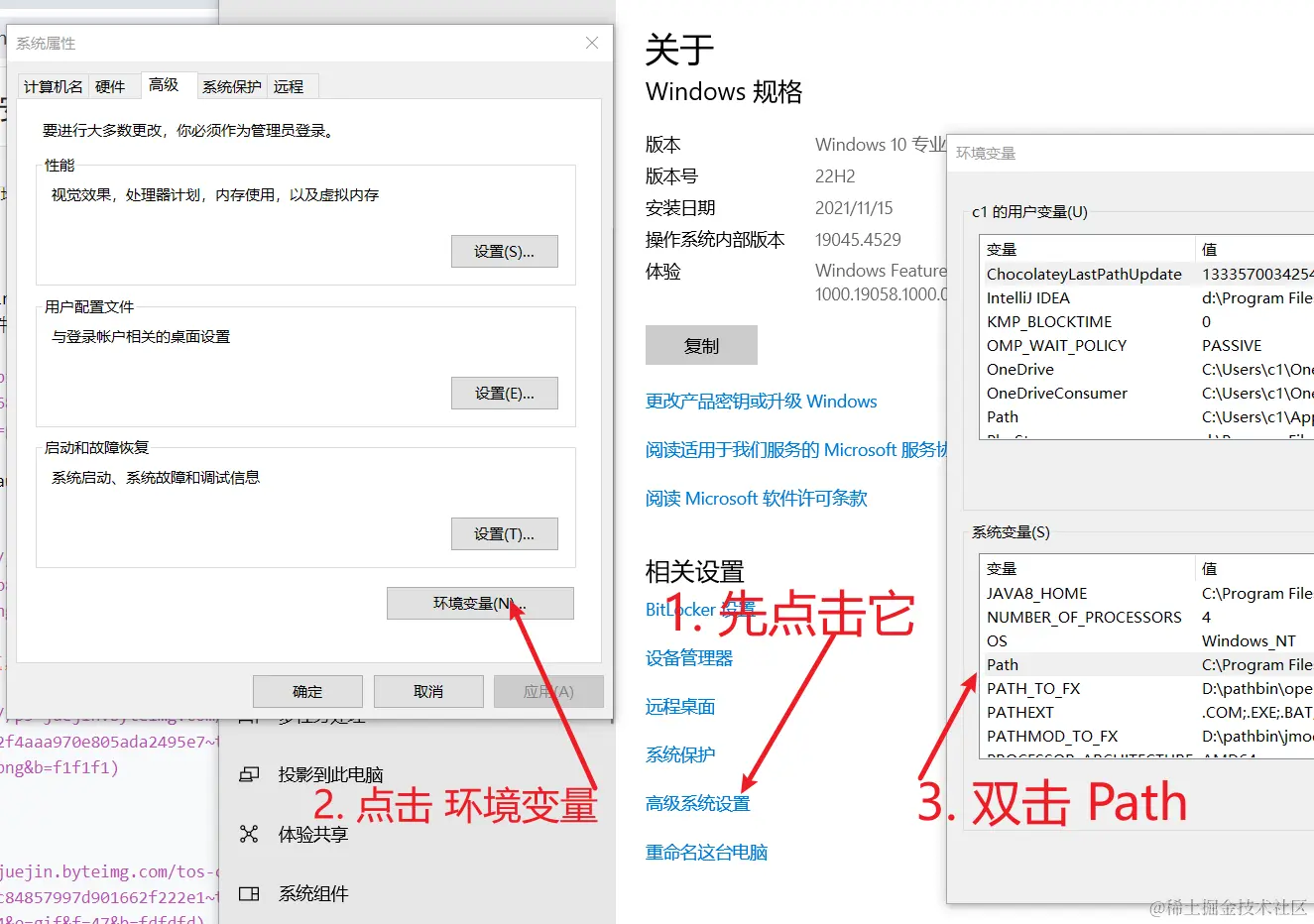
Then click New → Browse, and navigate to the directory containing the three .exe files.
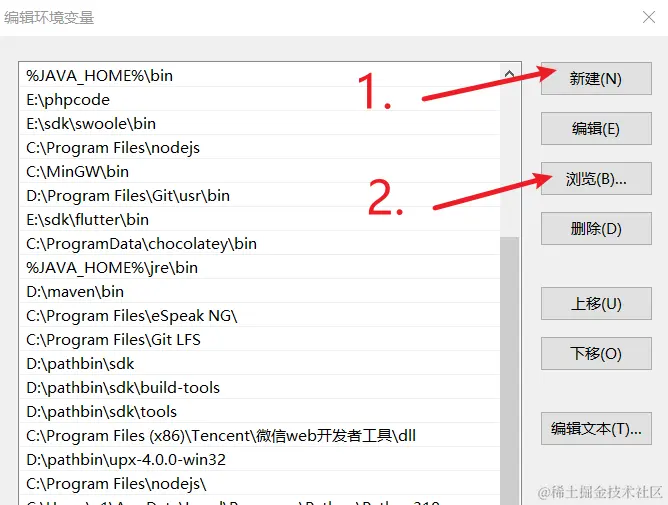
In the browse dialog, find the directory where ffmpeg.exe is located, then click OK.
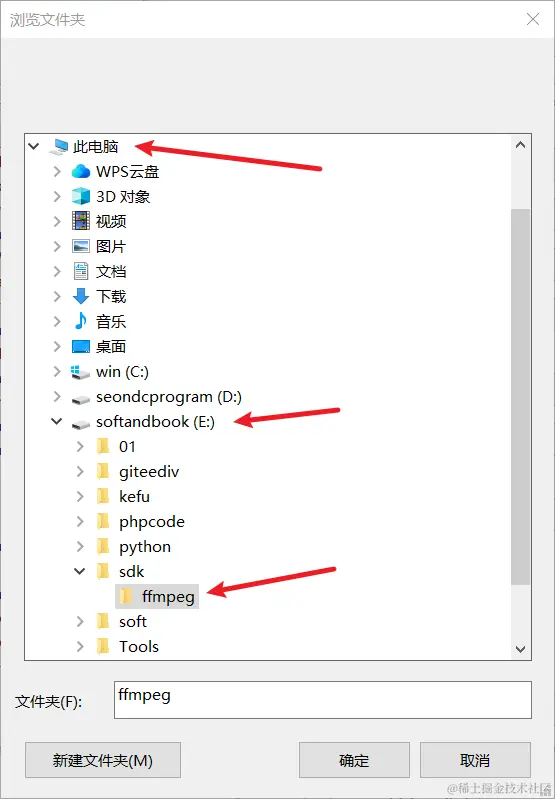
You will see the newly added path on the left. Click OK to close, and continue clicking OK to close all open dialogs.
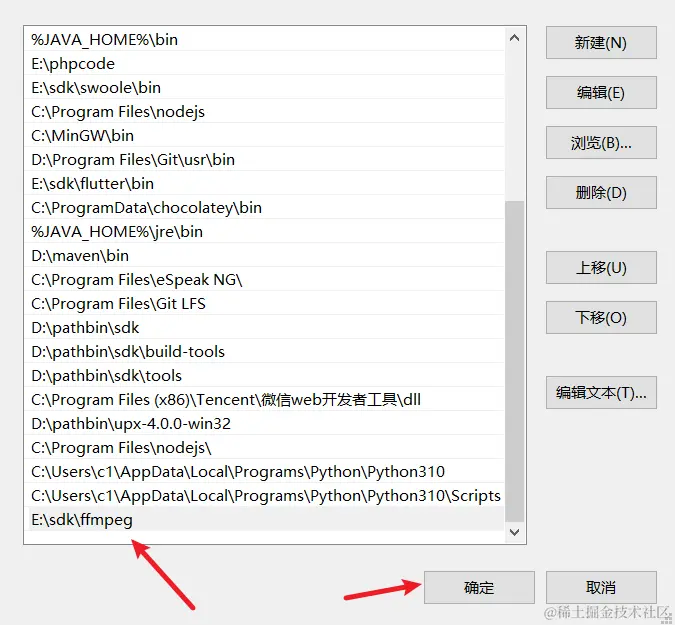
Animated Demonstration
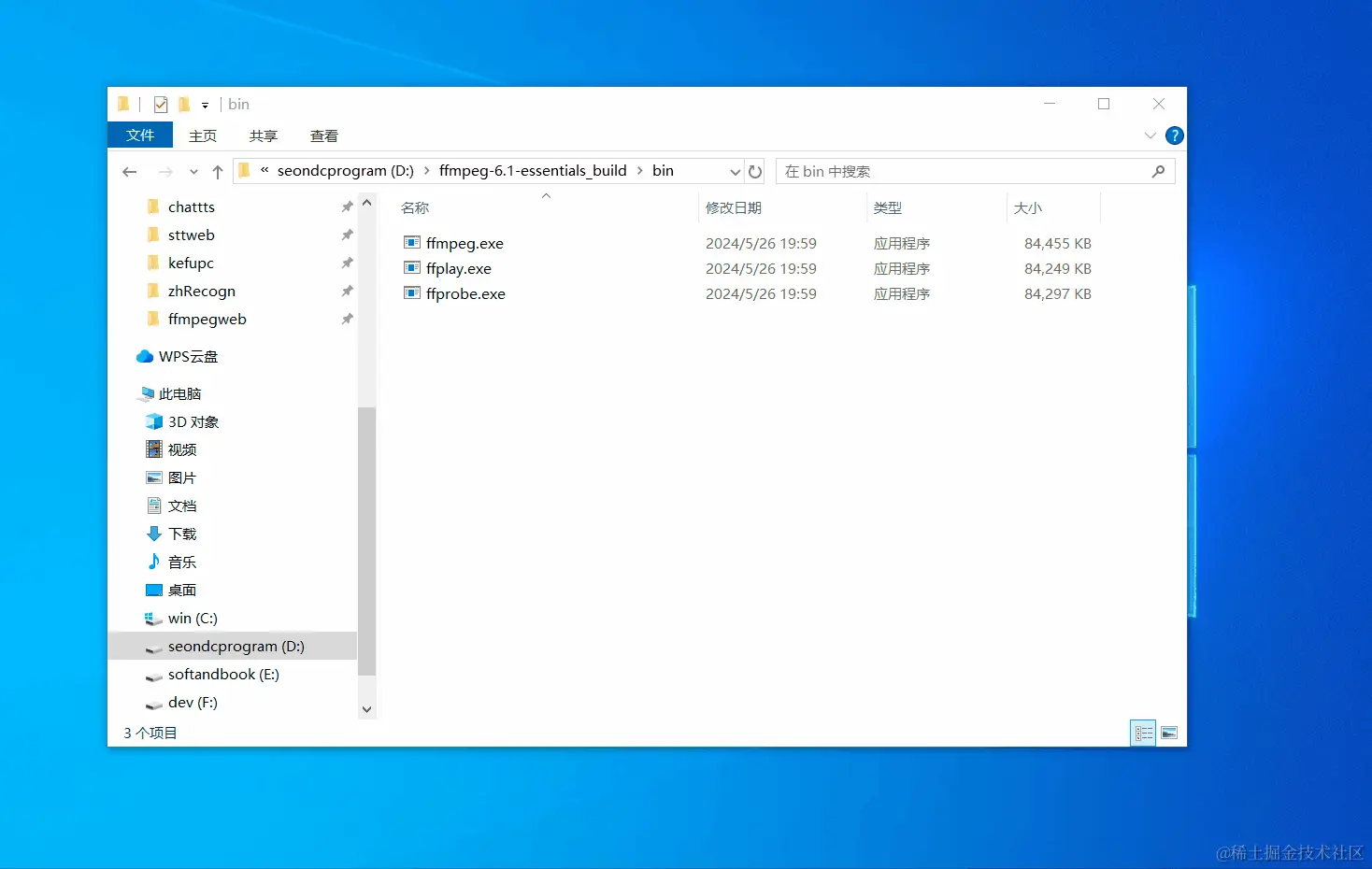
Verifying the Environment Variable Setup
Open any Command Prompt window and type ffmpeg then press Enter. If it displays output like the image below, the installation is correct. If you see an error like "'ffmpeg' is not recognized as an internal or external command...", there was an issue with the environment variable setup; please reconfigure it.
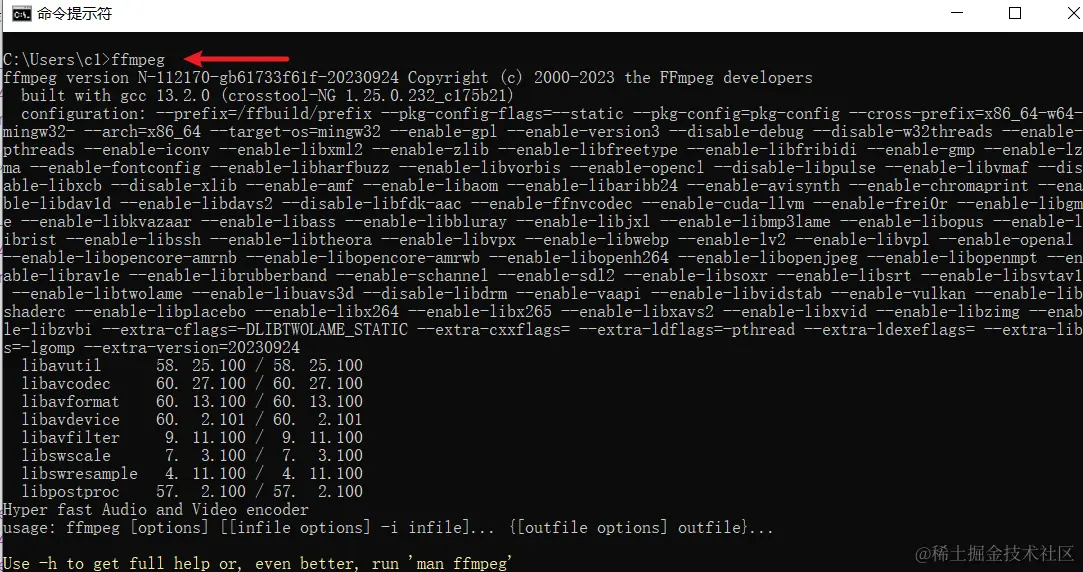
About Compression Formats: .7z vs .zip
ffmpeg-release-essentials.7z(27 MB)ffmpeg-release-essentials.zip(88 MB)
These two files contain exactly the same content; the only difference is the compression algorithm.
.7z: Uses the 7-Zip algorithm, which has a higher compression ratio, resulting in a smaller download file. You need software like 7-Zip or WinRAR to extract it..zip: Windows has built-in support for extracting.zipfiles, offering the best compatibility, but the compression ratio is lower, so the download file is larger.
Recommendation: If you have 7-Zip or WinRAR installed, download the .7z version to save download time and bandwidth.
Summary and Selection Guide
| Version Name | Main Features | Target Users | Recommendation |
|---|---|---|---|
ffmpeg-release-essentials | Core features, small size | General users, beginners | ★★★★★ (Most Recommended) |
ffmpeg-release-full | Full features, static build, large executables | Advanced users, professionals | ★★★★☆ |
ffmpeg-release-full-shared | Full features, dynamic linking, includes many DLLs | Software developers | ★☆☆☆☆ (Avoid for general use) |
In a nutshell:
- Unsure which to choose? -> Download
ffmpeg-release-essentials.7z. - Getting "unknown feature" errors with
essentials? -> Switch toffmpeg-release-full.7z. - Are you a developer integrating FFmpeg into your project? -> Download
ffmpeg-release-full-shared.7z.

